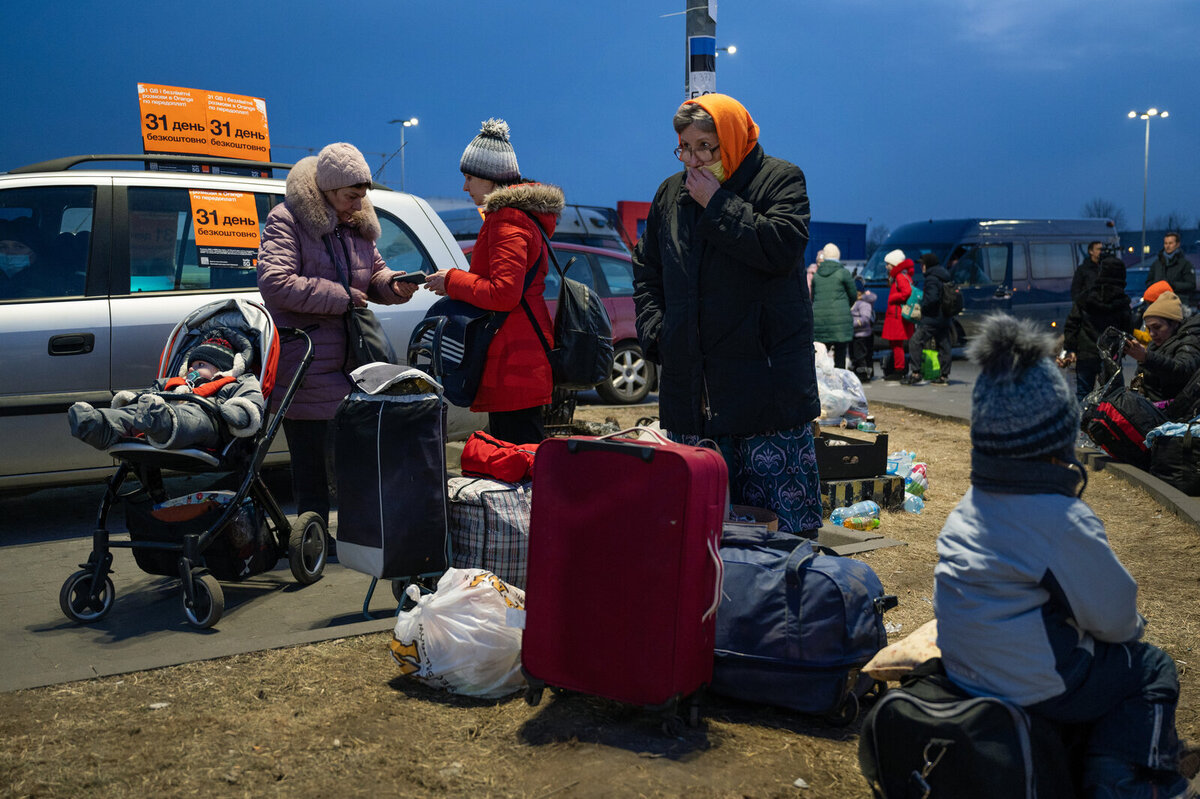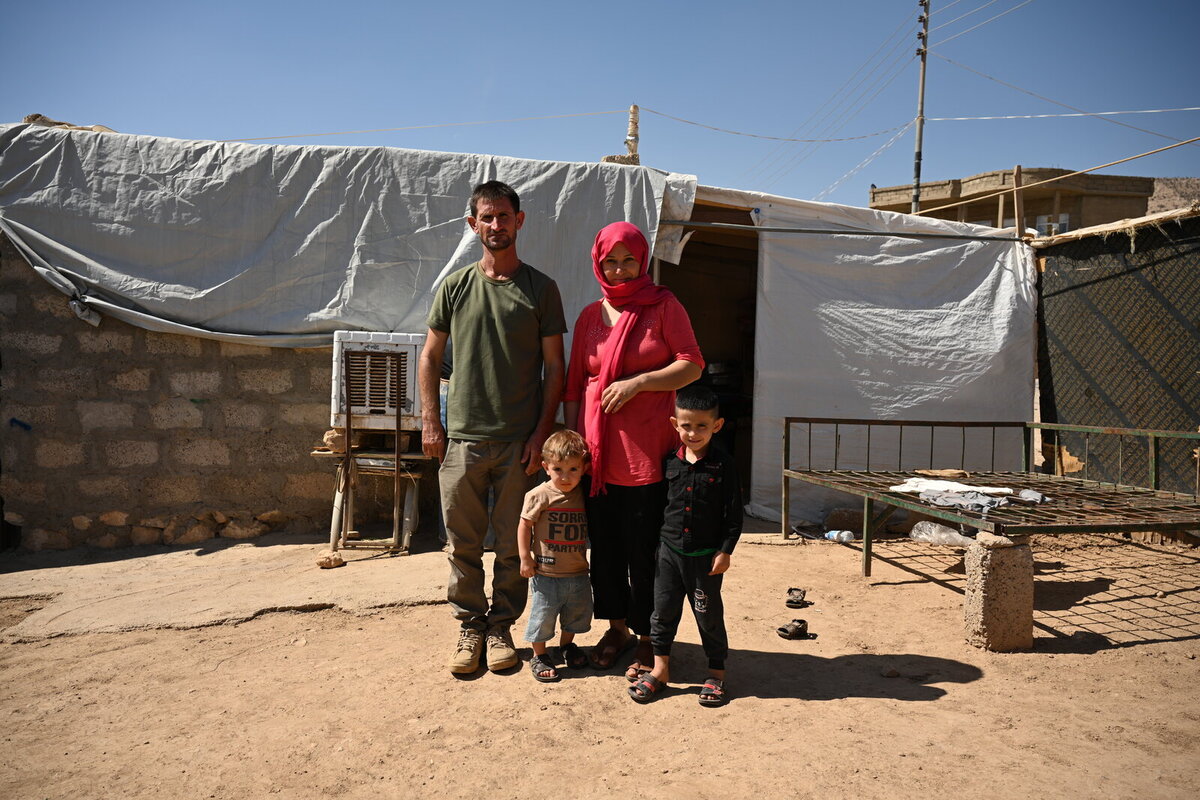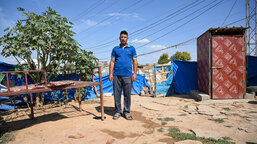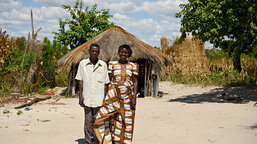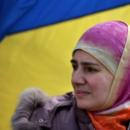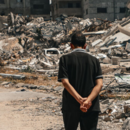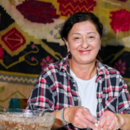There is now a record number of people worldwide who had to flee their homes. At the end of last year, displaced people exceeded 117 million. The number almost doubled over the last decade. The vast majority were displaced by war or ethnic and other violence. Behind these numbers lie countless human tragedies. Why has the number of forcibly displaced risen for the twelfth year in a row and reached a record high?
1. There is an unprecedented number of conflicts raging in the world
The world is experiencing a record number of war conflicts since the Second World War. They leave millions of people displaced from their homes and millions of lives torn apart. Last year alone, 8.8 million people were forcibly displaced. It is people trying to escape the ongoing armed conflict in their country who make up the vast majority of all those forcibly displaced. However, the increase in the number of those who have to flee their homes continues unabated, with estimates already exceeding the 120 million mark during this spring. That corresponds to twice the entire population of Italy.
Conflicts in Sudan and the Democratic Republic of Congo, as well as in Ukraine and Myanmar, are among the main causes of the recent surge in the number of displaced people. The war in Syria, which has driven 13.8 million people from their homes, is a sad record-breaker. Caritas Czech Republic is actively supporting refugees and internally displaced people to get back on their feet.
2. The armed conflict in Sudan has caused the world's largest humanitarian and displacement crisis
One of the most tragic conflicts in the world today is happening in Sudan. Fighting between rival armies in the country, which has been raging since April of last year, has caused a massive humanitarian crisis. As a result, 10.8 million people were forcibly displaced by the end of 2023 alone. The vast majority of them remain in Sudan. This makes Sudan the country with the largest number of people ever internally displaced. This includes 4 million children. At the same time, the conflict has closed thousands of educational institutions and 19 million children are unable to attend school. Some 1.8 million of the local population have left the country, mainly to neighbouring states.
There is massive destruction of critical infrastructure in Sudan, leaving millions of people with insufficient access to food, healthcare and other basic services. Half of Sudan's population needs humanitarian aid and famine is imminent. At the same time, human rights organisations are warning of the risk of genocide in the West Darfur region because of mass killings and forced displacement.
3. The war in Gaza has driven most of its population out of their homes
The brutal attacks by Hamas fighters on 7th October last year and the subsequent disproportionate Israeli response sparked one of the bloodiest conflicts since the end of World War II. Nearly 40,000 people have been killed so far, and the number of wounded has exceeded 90,000. In the Gaza Strip, it is estimated that at least 1.7 million people have had to flee their homes, many of them repeatedly. Half of the 2.2 million inhabitants there are children.
The conflict in Gaza has a disastrous impact on the civilian population, who have nowhere safe to go and cannot flee the enclosed enclave. The humanitarian situation is beyond desperate, with a catastrophic lack of basic necessities such as drinking water, food and sanitation in Gaza. The infrastructure is devastated, the health system has collapsed, and no schools or other necessary infrastructure are working. Gaza is on the brink of famine. Despite the extremely challenging conditions, Caritas continues to provide humanitarian aid to civilians in the Gaza Strip. We have also launched a Caritas for Gaza fundraiser. By the end of last year, 6 million Palestinians had been forcibly displaced, including 1.6 million in Gaza.
Donate to help civilians in GAza
4. The climate crisis is making life in many parts of the world impossible or significantly more challenging
Climate change is depriving people worldwide of their livelihoods and driving them from their homes. According to estimates, there will be up to 1.2 billion climate refugees worldwide by 2050. Already, an average of over 21 million people leave their homes each year because of natural disasters. The most affected areas are Africa and the Middle East. Water scarcity, droughts and extreme weather events will force millions more to flee.
Extreme weather events such as droughts, floods and extreme heat are becoming more frequent and intense. In the last 40 years, disasters directly linked to climate change have tripled. This not only leads to loss of life but also seriously affects infrastructure and drives people from their homes. Often, the changes impact more countries already experiencing armed conflicts and are making an already difficult situation for the people there much worse.
At Caritas Czech Republic, we recognise how crucial it is to protect the climate. That is why we are actively engaged in both protecting it and supporting affected populations to adapt to climate change.
5. The war in Ukraine has deprived millions of people of their homes
The invasion of Ukraine by Russian troops in February 2022 caused a huge population movement. 11.6 million people had to flee their homes, and about half of them left the country. Currently, 6.3 million Ukrainians who fled the war remain abroad, while 3.7 million people have been displaced to safer parts of Ukraine. Caritas Czech Republic is helping to provide them with decent accommodation in modular houses and renovated dormitories.
Caritas Czech Republic has been helping people affected by the war in Ukraine since the first day of the conflict. We have repeatedly sent humanitarian aid to the country. We are also helping refugees from Ukraine in Moldova and the Czech Republic.
6. Refugees and internally displaced people often cannot return to their homes
Returning home after the war is not easy. Destroyed houses, devastated infrastructure, lack of job opportunities or a difficult security situation. These are just some of the hardships that people returning home after a conflict have to deal with.
In Iraq, for example, where the war ended in 2017, there are still 1.2 million people who cannot return to their homes. The main reason is an overly fragile security situation, but also a lack of livelihood opportunities or infrastructure. Nearly 5 million former internally displaced persons have returned home, but they often live in inadequate conditions and need help to rebuild their lives. Caritas Czech Republic also helps people who have returned home after the war. Our main focus is on securing livelihoods, rebuilding and opening small businesses and farms.
In many countries, such as Syria, the ongoing conflict is protracted and the prospect of returning home is becoming less and less likely for many people. In countries such as Afghanistan, current political, economic and human rights conditions do not allow for return. It is therefore important to focus not only on supporting returnees, but also refugees and internally displaced persons, so that they not only have their basic needs met, but are also able to build a new, self-sufficient life in their host country. Caritas Czech Republic is helping refugees in this way, for example in Zambia or Moldova.


